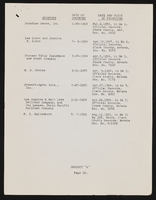Search the Special Collections and Archives Portal
Search Results

Photograph of a woman standing next to a water conservation sign in Jean, Nevada, circa 1920s
Date
Archival Collection
Description
Woman in Western-style clothing standing outdoors in Jean, Nevada next to a sign on a post which reads, "Please don't waste the water, we have to buy it."
Image
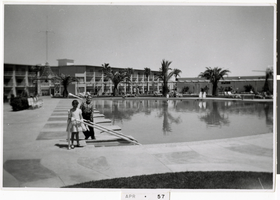
Photograph of Anita and Charles Perri at the Tropicana swimming pool (Las Vegas), April 1957
Date
Archival Collection
Description
Two children, Anita and Charles Perri, near the swimming pool of the Tropicana in April, 1957. Handwritten text from back of photo: "Tropicana Hotel, Apr. 1957. Anita and Charles Perri."
Site Name: Tropicana Hotel
Address: 3801 Las Vegas Boulevard South, Las Vegas, NV
Image
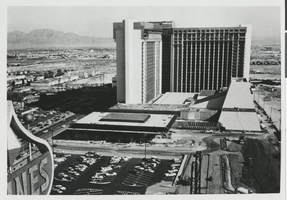
Photograph of the MGM Grand Hotel during its construction (Las Vegas), 1973
Date
Archival Collection
Description
The MGM Grand under construction in 1973. After the 1980 fire, the MGM Grand Hotel was rebuilt in 1981 and sold to Bally's Corporation to become Bally's Las Vegas in 1985.
Site Name: MGM Grand Hotel
Address: 3645 Las Vegas Boulevard South, Las Vegas, NV
Image
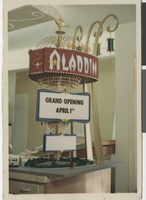
Photograph of a scale model of the Aladdin Hotel's sign (Las Vegas), 1966
Date
Archival Collection
Description
Detailed scale model of the sign and marquee for the Aladdin Hotel and Casino.
Site Name: Aladdin Hotel
Address: 3667 Las Vegas Boulevard South, Las Vegas, NV
Image
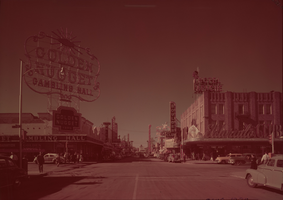
Film transparency of Fremont Street seen from Second Street, Las Vegas, Nevada, circa 1947
Date
Archival Collection
Description
Looking northwest towards the Union Pacific Railroad station from the intersection of Fremont and Second Streets, Las Vegas, Nevada. The Golden Nugget is on the southwest corner and the Eldorado Club is on the northwest corner. Signs for the Boulder Club, Pioneer Club, Las Vegas Club, Frontier Club and White Spot Cafe are also visible.
Site Name: Fremont Street
Address: Fremont Street, Las Vegas, NV
Image
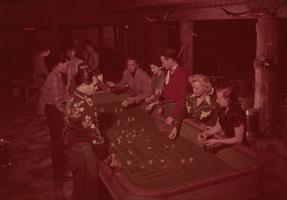
Film transparency of gamblers at a craps table in the Hotel Last Frontier (Las Vegas), 1950-1959
Date
Archival Collection
Description
Gamblers playing craps. The gambler playing craps has $350 in his hand.
Site Name: Frontier
Address: 3120 Las Vegas Boulevard South
Image
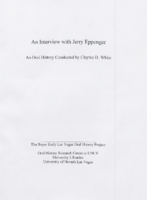
Transcript of interview with Jerry Eppenger by Claytee D. White, September 14, 2011
Date
Archival Collection
Description
Interview with Jerry Eppenger conducted by Claytee D. White on September 14, 2011. Eppenger's family moved from Arkansas to Las Vegas in 1953. Joining the Marine Corps in 1964, he was among the early combatants in the Vietnam War. After a brief time in Alaska, he returned to Las Vegas and found work as a security guard at Bonanza Hotel and Nevada Test Site before attending dealer school. Eppenger recalls local black leaders and describes episodes in segregation and racial relations of 1970s Las Vegas. He shares memories of his beloved Cadillac and the fast and lucrative lifestyle of a dealer.
Text
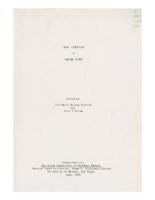
Transcript of interview with Arlone Scott by Glen Ette Davis, July 3, 1975
Date
Archival Collection
Description
Interview with Arlone Scott conducted by Glen Ette Davis on July 3, 1975. Born in Louisiana, Scott moved to Las Vegas in 1951, eventually becoming a hotel maid supervisor. She shares her early experiences of positive race relations among churches in Las Vegas and notes that the Culinary Union improved job opportunities for minorities. Scott concludes with comments on the effects of discrimination and segregation on entertainment and recreation for blacks.
Text

